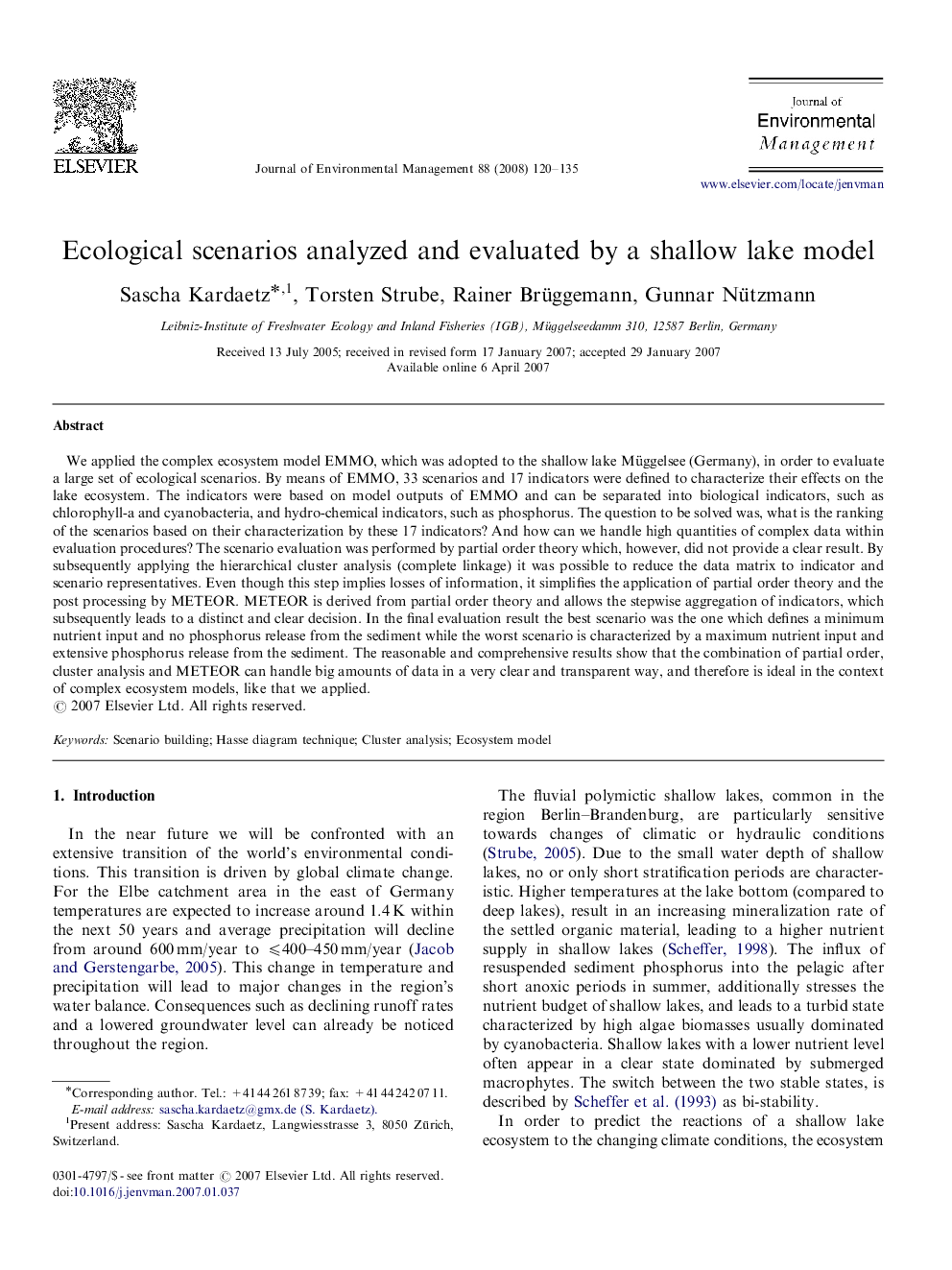| Article ID | Journal | Published Year | Pages | File Type |
|---|---|---|---|---|
| 1058562 | Journal of Environmental Management | 2008 | 16 Pages |
Abstract
We applied the complex ecosystem model EMMO, which was adopted to the shallow lake Müggelsee (Germany), in order to evaluate a large set of ecological scenarios. By means of EMMO, 33 scenarios and 17 indicators were defined to characterize their effects on the lake ecosystem. The indicators were based on model outputs of EMMO and can be separated into biological indicators, such as chlorophyll-a and cyanobacteria, and hydro-chemical indicators, such as phosphorus. The question to be solved was, what is the ranking of the scenarios based on their characterization by these 17 indicators? And how can we handle high quantities of complex data within evaluation procedures? The scenario evaluation was performed by partial order theory which, however, did not provide a clear result. By subsequently applying the hierarchical cluster analysis (complete linkage) it was possible to reduce the data matrix to indicator and scenario representatives. Even though this step implies losses of information, it simplifies the application of partial order theory and the post processing by METEOR. METEOR is derived from partial order theory and allows the stepwise aggregation of indicators, which subsequently leads to a distinct and clear decision. In the final evaluation result the best scenario was the one which defines a minimum nutrient input and no phosphorus release from the sediment while the worst scenario is characterized by a maximum nutrient input and extensive phosphorus release from the sediment. The reasonable and comprehensive results show that the combination of partial order, cluster analysis and METEOR can handle big amounts of data in a very clear and transparent way, and therefore is ideal in the context of complex ecosystem models, like that we applied.
Related Topics
Physical Sciences and Engineering
Energy
Renewable Energy, Sustainability and the Environment
Authors
Sascha Kardaetz, Torsten Strube, Rainer Brüggemann, Gunnar Nützmann,
